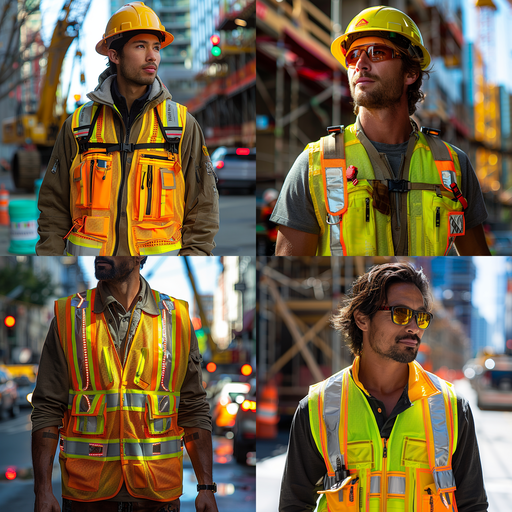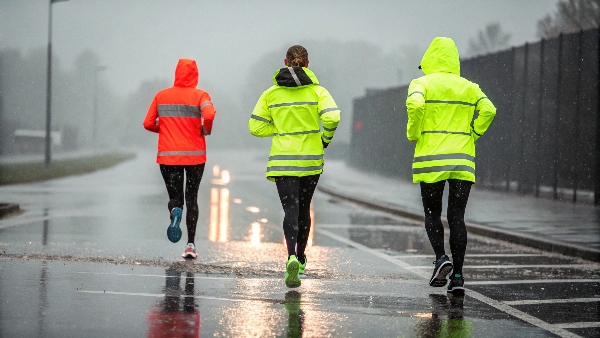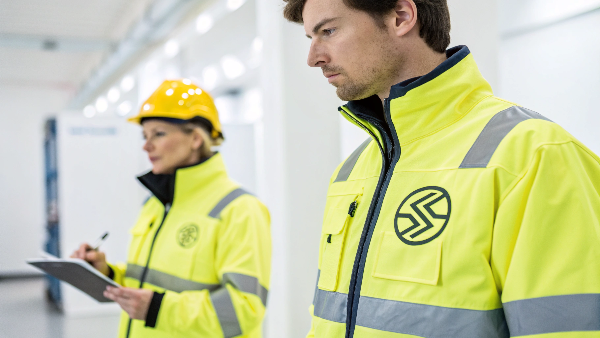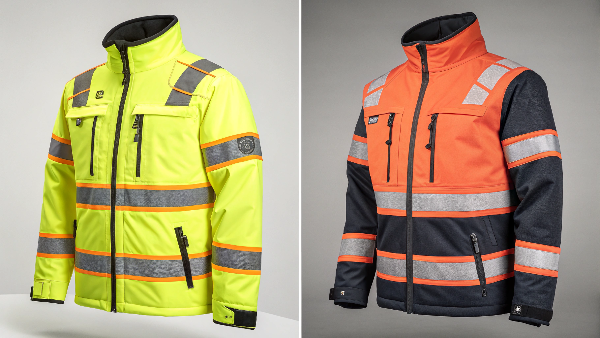Now, imagine this: You’re a production manager in charge of sourcing high-visibility clothing for a large-scale construction project. You need to keep your workers safe, but you also need to keep costs in line. You’ve dealt with suppliers who promised you the world but delivered late, or worse, delivered crap that didn’t meet safety standards. You’re frustrated because you missed deadlines and now you’re incurring extra costs.
How would you feel if you found a supplier who not only offers you top-quality, customizable safety vests but also guarantees you fast delivery times and competitive pricing? At Vissafetywear, we understand your pain points and have tailored our services to meet your needs. We provide a seamless, efficient, and reliable solution for your high-visibility clothing needs.

Are You Looking for Customizable Safety Vests with Competitive Pricing?
The answer is a resounding "Yes!" And here’s why Vissafetywear should be your go-to choice:
Reflective Apparel
Reflective Apparel offers custom safety vests that can be tailored with your company logo or design, available in various colors like lime-yellow and orange. They utilize premium polyester fabric and 3M reflective materials, ensuring durability and high visibility. Features such as pockets, zippers, and breakaway designs are available to meet specific needs. Furthermore, their vests are ANSI compliant (Class 2 and 3), ensuring they meet stringent safety standards.
Discount Safety Gear
Discount Safety Gear provides custom screen-printed safety vests with your logo or artwork. They have a minimum order of 12 vests for custom printing, with no setup fee for orders of 24 or more vests. Their vests meet OSHA requirements for high-visibility clothing, ensuring compliance with safety regulations.
LogoSportswear
LogoSportswear allows you to customize reflective safety vests online with your logo. Available in colors like yellow, orange, and blue, these vests offer additional features such as pockets, big & tall sizing, and compliance up to ANSI Class 2. Importantly, there are no minimum order requirements, making it easier for smaller businesses or projects to get started.
Transitioning to Deeper Insights
While the ability to customize safety vests with competitive pricing is a significant advantage, it’s crucial to understand the broader aspects of safety vests to make an informed decision. This includes recognizing potential disadvantages, the meanings behind different colors, regulatory requirements, and best practices for usage and maintenance.
What Are the Disadvantages of Safety Vests?
While safety vests are essential for ensuring worker visibility and safety, they are not without their drawbacks.
Restricted Movement
One of the primary disadvantages of safety vests is restricted movement. Certain types of vests, especially those with bulky padding or an improper fit, can obstruct movement and restrict the wearer's range of motion. This can be particularly problematic for jobs that require a lot of physical activity or mobility, such as construction or emergency response.
Discomfort
Another common issue is discomfort. Ill-fitting vests that are too tight or loose can cause significant discomfort for the wearer. Over time, this discomfort may lead to workers removing or improperly wearing the vest, compromising their safety. Ensuring a proper fit is crucial to maintaining both comfort and safety.
Heat Buildup
In hot or humid environments, certain vest materials like polyester can trap heat, causing the wearer to overheat. This can lead to fatigue or heat-related illnesses if the vest is not properly ventilated. Choosing vests with breathable materials and proper ventilation can mitigate this issue.
What Do the Different Color Safety Vests Mean?
The color of a safety vest is not just a matter of preference; it has specific meanings and uses, often dictated by industry standards and safety regulations.
Yellow/Lime Safety Vests
Yellow or lime-green safety vests are one of the three ANSI-approved high-visibility colors, along with orange and red. Fluorescent yellow-green provides high contrast and visibility during the daytime, making it ideal for construction workers, utility workers, airport ground crew, and emergency responders. This color is also effective for nighttime work when sunlight is minimal, as the bright color stands out against dark backgrounds.
Orange Safety Vests
Orange safety vests are another ANSI-approved high-visibility color. They provide high contrast against vegetation, blue skies, and bright sunlight, making them widely used by road construction crews, surveyors, and airport personnel working around aircraft. Orange is also popular among hunters and outdoor enthusiasts to increase visibility and prevent accidents.
Red Safety Vests
Red safety vests are the third ANSI-approved high-visibility color. They are often used by workers in potentially hazardous situations, such as firefighters and emergency medical responders. The bright red color allows for easy identification even in smoke or low-visibility conditions. Red vests are also sometimes used in manufacturing and construction to denote workers near hazardous materials.
Are Safety Vests Required by OSHA?
Yes, OSHA does require workers in certain high-risk environments to wear high-visibility safety vests or other approved high-visibility apparel. Here are the key points regarding OSHA's safety vest requirements:
OSHA Requirements for Safety Vests
OSHA's General Duty Clause (29 U.S.C. §654(a)(1)) mandates that flaggers, construction workers, excavation workers, and any workers exposed to vehicular traffic hazards must wear high-visibility safety apparel. OSHA's construction standard 29 CFR 1926.201 specifically states that garments worn by flaggers must conform to the Manual on Uniform Traffic Control Devices (MUTCD), which requires Class 2 or Class 3 vests/garments for workers exposed to traffic.
Additionally, the Federal Highway Administration rule 23 CFR Part 634 mandates that all workers within the right-of-way of federal-aid highways must wear ANSI-compliant high-visibility vests or garments. These regulations ensure that workers are adequately protected in environments with vehicular traffic and other hazards.
Can I Wear a Black Safety Vest?
Black safety vests alone do not meet the ANSI standards for high-visibility safety apparel. However, black can be incorporated into ANSI-compliant vests under certain conditions:
ANSI requires high-visibility vests to have a specific amount of fluorescent background material in yellow-green, orange-red, or red colors to ensure visibility from long distances. For a vest to be ANSI compliant, it must meet the minimum area requirements for fluorescent background material - 217 sq inches for Class 1, 775 sq inches for Class 2, and 1240 sq inches for Class 3 vests.
While black safety vests can be stylish and may be used in certain non-ANSI applications, they should not be relied upon for high-visibility safety in hazardous environments. Always ensure that the primary color of the vest meets ANSI standards for high visibility.
What Does a Purple Vest Mean?
Purple is not one of the ANSI-approved high-visibility colors (yellow-green, orange-red, red) for safety vests used in construction, traffic work, or other hazardous environments requiring high visibility. However, purple safety vests are available from various vendors and are typically classified as "non-ANSI" or "multi-usage utility vests."
Purple vests may be used in specific contexts where high visibility is not the primary concern, such as event staff at concerts or festivals, or for identification purposes in certain industries. However, they should not be used in environments where high visibility is critical for safety.
How Long Is a Safety Vest Good For?
The lifespan of a safety vest depends on several factors, including frequency of use, environmental conditions, and how well the vest is maintained.
Daily Use
If a reflective safety vest is worn daily and properly maintained, it generally has a service life expectancy of about 6 months. Daily wear and tear, exposure to sunlight, and physical activity can all contribute to the gradual degradation of the vest's materials.
Intermittent Use
A reflective safety vest that is not worn every day can last up to 3 years if kept clean and maintained properly. Intermittent use reduces the wear and tear on the vest, allowing it to maintain its visibility and effectiveness for a longer period.
Signs of Wear and Tear
Over time, the fluorescent color concentration can fade, and the reflective material can become damaged or worn, reducing the vest's visibility and effectiveness. Most manufacturers recommend replacing safety vests every 5-7 years from the date of purchase, as the materials can degrade over time due to use, exposure to outdoor conditions, and body heat.
Proper Care
Proper care can help extend the lifespan of a safety vest. This includes storing vests away from direct sunlight, cleaning them regularly according to the manufacturer's instructions, and avoiding crushing or folding the reflective material. Signs that a safety vest may need replacement include faded or dull fluorescent fabric, damaged reflective strips, excessive dirt that won't come out, rips or tears, or a lack of comfort when worn for extended periods.
Conclusion
In summary, you can get affordable, custom safety vests that keep your people safe and help you meet the rules. We have them at Vissafetywear. We can make them the way you want, get them to you fast, and make sure they meet the safety standards. You know the potential downsides. You know what the colors mean. You know the rules. You know how to use them and maintain them. You’re good to go.
If you’re a production manager, an office buyer, or a distributor, we make it easy for you to get high-visibility clothing. When you choose Vissafetywear, you know you’re getting the best safety vests for your people, and you’re not going to break the bank. Go to vissafetywear.com to see what we have to offer and get started making your workplace safer and more productive.



